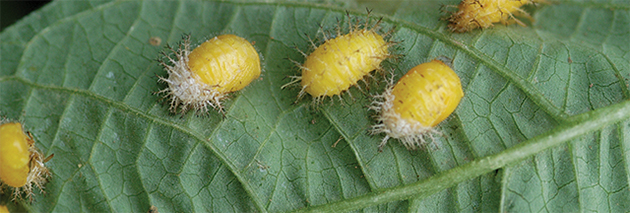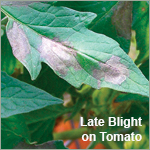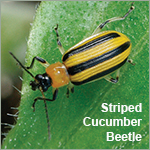- Actinovate Lawn & Garden | Biofungicide | Label
- Actinovate Lawn & Garden | Biofungicide | MSDS
- Actinovate Lawn & Garden | Biofungicide | OMRI Certificate (PDF)
- Actinovate Biofungicide | Product Handling Guidelines: Extended Shelf Life
- Agribon+ AG-15 Insect Barrier | Insert (PDF)
- AzaGuard | Specimen Label | Johnny's Selected Seeds
- AzaGuard | Materials Safety Data Sheet
- AzaGuard | OMRI Certificate
- AzaGuard | Usage Rates
- Prospera® DMR Basil Comparison Chart | Johnny's Selected Seeds
- Basil Downy Mildew and Prospera® DMR Basil | Breakthrough Breeding Innovation Provides Solutions
- Cucumber Beetle Lure Instructions | Tech Sheet (PDF)
- Disease Resistance Codes | Common Plant & Seed Crop Pathogens
- Disease Codes & Definitions for Common Vegetable & Basil Diseases (PDF)
- Fungicides/Bactericides/Algaecides | Comparison Chart (PDF)
- Insecticides | Comparison Chart (PDF)
- Jacto HD400 Ball Valve Sprayer | Operation Manual (PDF)
- Late Blight Awareness & Prevention | Tech Sheet (PDF)
- Organic 1r Seed Treatment | OMRI Certificate
- Organic 1r Seed Treatment | Safety Data Sheet
- Pest & Disease Control Basics in Greenhouse, Hydroponic & Other Protected-Culture Systems
- Physical, Biological & Botanical Pest & Disease Controls | Comparison Chart (PDF)
- Effective Sustainable Pest & Disease Control | Tips for Adopting an IPM Approach
- Rotate & Combine Crops & Controls | Prevent Resistance Buildup in Pests & Pathogens
- Pests & Diseases of Greenhouses & Hydroponic Systems | Tech Sheet (PDF)
- Repellents | Comparison Chart (PDF)
- RootShield Plus+ WP | Wettable Powder | Label
- RootShield Plus+ WP | Wettable Powder | MSDS
- RootShield Plus+ WP | Wettable Powder | OMRI Certificate
- Video: Strategies to Support Beneficial Insects, with Johnny's Education Coordinator
- Video: How to Manage Late Blight on Tomatoes (Phytophthora infestans)
- Video: Cover Cropping for Field & Garden with Collin Thompson | Johnny's Webinar Series
- Video: Prospera® Red Downy Mildew-Resistant Basil
- Plantskydd | Frequently Asked Questions
- Just Add Flowers | An Introduction to Companion Planting for Vegetable & Herb Gardeners
- MilStop SP | OMRI Certificate
- MilStop SP | MSDS
- Video: Disease-Resistant Basils from Johnny's • Tutorial with Niki Jabbour
- Surround WP Agricultural Crop Protectant | Label
- PyGanic Gardening | 1.4% | Label | OMRI-Listed | Approved for Certified-Organic Production
- Intro to Farmscaping: Insectary, Trap, & Repellent Crops for Pest Management
- Liquid Copper Fungicide | MSDS
- PyGanic Crop Protection EC 5.0% II | MSDS
- Plantskydd Granular Repellent | OMRI Certificate
- Dipel-DF | Bacillus thuringiensis (B.t.) for Organic Production | California SLN Label
- Surround WP | OMRI Certificate
- Sluggo | OMRI Certificate
- Plantskydd Repellent | Soluble Powder Concentrate (SPC) | Label
- Video: How to Identify Late Blight on Tomatoes
- Video: Prospera® Downy Mildew-Resistant Basil
- SaniDate 5.0 | Sanitizer/Disinfectant | Label
- SaniDate 5.0 | Sanitizer/Disinfectant | OMRI Certificate
- Dipel-DF | Bacillus thuringiensis (B.t.) for Organic Production | MSDS
- SaniDate 5.0 | Sanitizer/Disinfectant | MSDS
- Dipel-DF | Bacillus thuringiensis (B.t.) for Organic Production | Label
- Video: Veggie Remix: Bring New Flavors & Colors Into Your Garden | Johnny's Webinar Series
- OxiDate 2.0 | Broad-Spectrum Bactericide/Fungicide | OMRI Certificate
- Surround WP | MSDS
- Growing Under Cover with Niki Jabbour & Johnny's | Johnny's Educational Webinar Resources
- Monterey Garden Insect Spray | OMRI Certificate
- Plantskydd Granular Repellent | Label
- Plantskydd Granular Repellent | SDS
- PyGanic Crop Protection | Application Rate Chart
- PyGanic Crop Protection EC 5.0% II | Label | OMRI-Listed | Approved for Certified-Organic Production
- Sluggo Molluscide | MSDS
- OxiDate 2.0 | Broad-Spectrum Bactericide/Fungicide | MSDS
- PyGanic Gardening | 1.4% | MSDS
- Row Cover & Insect Netting Options & Uses | Comparison Chart (PDF)
- PyGanic Crop Protection EC 5.0% II | OMRI Certificate
- Dipel-DF | Bacillus thuringiensis (B.t.) for Organic Production | OMRI Certificate
- OxiDate 2.0 | Broad-Spectrum Bactericide/Fungicide | Label Application Updates
- Video: Climate Adaptation for Vegetable & Flower Farmers | Johnny's Webinar Series
- Liquid Copper Fungicide | Label
- Video: Disease-Resistant Varieties from Johnny's • Tutorial with Niki Jabbour
- Sluggo Snail & Slug Bait | Label
- Video: Growing Under Cover with Niki Jabbour | Johnny's Webinar Series
- OxiDate 2.0 | Broad-Spectrum Bactericide/Fungicide | Label
- Common Brassica Pests & Diseases | Johnny's Selected Seeds
- Plantskydd Repellent | Soluble-Powder Concentrate | OMRI Certificate
- Plantskydd Soluble Powder Concentrate (SPC) | MSDS
- PyGanic Gardening | 1.4% | OMRI Certificate
- MilStop SP | Label
Alternating Crops & Controls
When certain crops or families of crops are replanted year after year in the same location, pests and diseases will tend to build up resistance to the controls used to keep them at bay.
Crop rotation is an ideal way to prevent buildup of pathogens in the soil/growing environment that are specific to that type of crop. It is also a good way to minimize populations of overwintering crop-specific pests. Rotating crop familes is ideal, but rotating crops within families or varieties within a crop can also be helpful. Each variety within each crop group responds differently to both disease and pest pressure, so it's important to look for resistance in the varieties you choose when you know you have a specific disease problem on your hands. Switching up varieties can also thwart the evolutionary tendency of a pathogen to evolve toward resistance.
When rotating crops and varieties is insufficient, however, another way to minimize resistance buildup is by alternating the controls. Certain controls can also be combined for better efficacy. These methods involve spraying different controls in alternating intervals or combining different controls in the same tank mixture.
Rotating Controls for Early & Late Blight
At our Albion research farm, when treating tomatoes for early and late blight prevention, we typically alternate controls by spraying with OxiDate® (a peroxide-based fungicide/bactericide) to first sanitize the crop and then follow up with a copper fungicide.
The next time we spray, we might again treat with OxiDate, but then follow up with a different fungicide, such as Actinovate®.
Combining control products with different modes of action will slow the buildup of resistance by targeting specific functions. For example, in European corn borer control, spinosad, the active ingredient of Monteray Garden Insect Spray, targets the insect's nerves and muscles; while Bacillus thuringiensis, the active ingredient of DiPel® DF, targets the insect's mid gut. Using a tank mix (combination) of materials such as these will have a synergistic control that will be more effective than independent applications.
Similarly, for control of cucumber beetles, PyGanic® (a pyrethrin-based insecticide) might be tank mixed with Surround® WP (a kaolin clay-based repellent) to provide both initial knockdown and subsequent repulsion of these cucurbit-loving pests.
Using Resistance-Proof Controls
There are other alternative controls to which arthropods and other pests cannot build up resistance. Diatomaceous earth kills by ingestion or by contact with the powder, which contains the fossilized remains of diatoms that cut the exoskeleton, causing dehydration within 48 hours. High-paraffinic, low-aromatic oils that suffocate eggs, larvae, nymphs, and adults of soft-bodied insects and mites are available, as well as other paraffinic or mineral oils and insecticidal soaps, as effective means of control without the possibility of resistance buildup.
Sluggo® is a unique granular product that contains the naturally occurring mineral iron phosphate, which breaks down into soil fertilizer, combined with a mollusk bait that lures the slugs to their demise. It is safe to use around children, pets, and wildlife, yet resistance-proof and lethal to slugs and snails.
Take Notes, Mix It Up & Keep It Safe
These are just a few examples of methods available for providing the control you need, while minimizing the risk of resistance buildup in pests and pathogens. From the commercial grower on down to the home gardener, keeping detailed records of which insect or disease issues are prevalent, the controls that were used, and how they worked is crucial to success. Always remember to read and carefully follow all label instructions when applying any pest or disease controls. When applied with a bit of commonsense, the fundamentals of crop rotation, control rotation, control combination, and resistance-proof choices are safe, effective, and environmentally sustainable.
Learn More
Resistance, as defined by the Insecticide Resistance Action Committee
Pesticide tolerance is defined as the amount of pesticide residue allowed by law to remain in or on a harvested crop.
Insecticide resistance is not the same as tolerance — though the terminology is widely debated and, inaccurately, used interchangeably.
Low-level resistance is still resistance, not tolerance.
A species-wide ability of a pest or pathogen to survive a particular control substance is tolerance, not resistance. E.g., aphids are not killed by the insecticide carbaryl (Sevin). They did not develop resistance as a result of selection pressure by repeated use of this insecticide but rather, they have always been "tolerant" of this insecticide.
Fungicides/Bactericides/Algaecides Comparison Chart PDF
Insecticides Comparison Chart PDF
Repellents Comparison Chart PDF
Pest & Disease Controls Product List
Integrated Pest Management (IPM) Principles US Environmental Protection Agency





